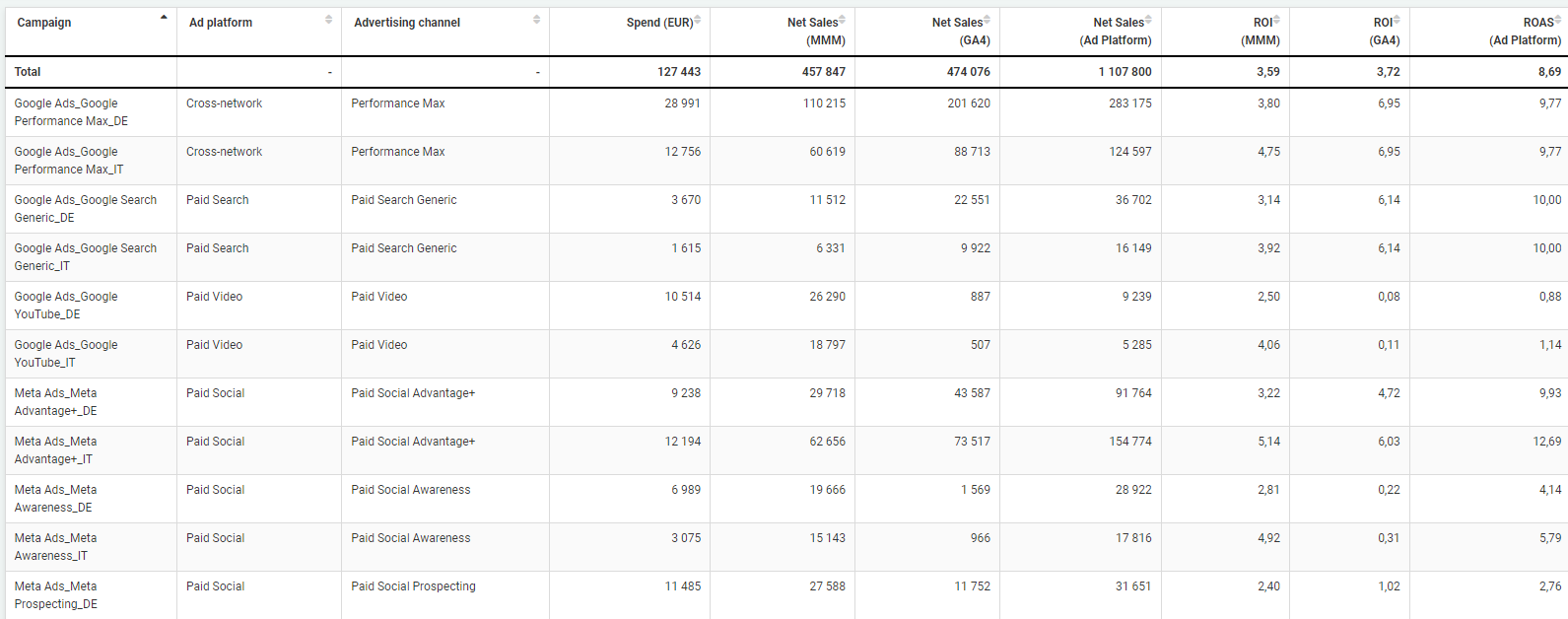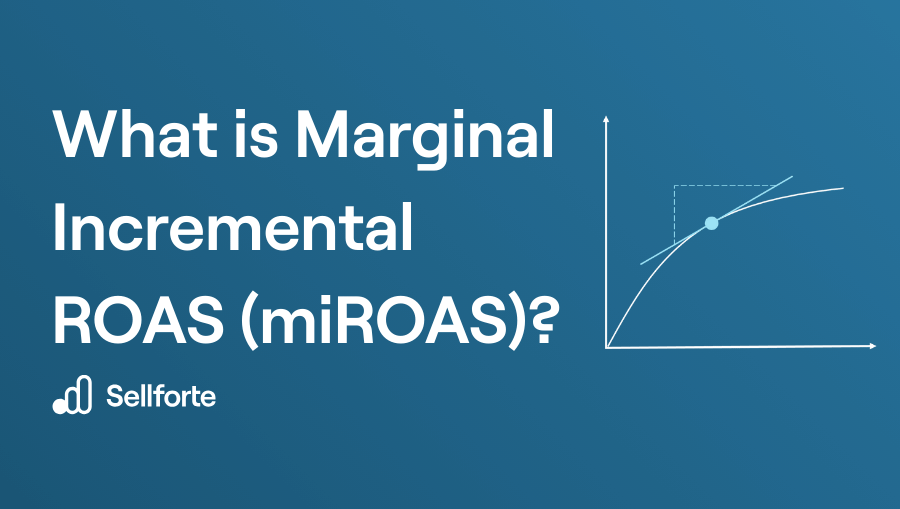How to Set a Target ROAS That Reflects True Incrementality

Digital marketing professionals spend a significant amount of time every week optimizing bid levels for the tens or hundreds of campaigns they are running. One major challenge for them is optimizing Target ROAS (Return on Ad Spend) for the campaigns. The problem is that ad platform-reported ROAS does not account for the true incrementality of the campaigns, and thus the ROAS metrics are not comparable across campaigns and ad platforms.
A new tool for this optimization process is the concept of Incremental Target ROAS, which provides a more accurate reflection of the true ROI (return on investment) by accounting for biases in the ROAS reported by the platforms. Incremental Target ROAS enables apples-to-apples comparisons of ROAS targets across campaigns. In this post, we’ll explore how to start setting Target ROAS levels based on Incremental Target ROAS using calibration multipliers.
The Problem: Ad platform-reported Target ROAS is not comparable from campaign to campaign
Ad platform attribution includes biases that make their reported ROAS metrics difficult to interpret. For example, ad platform attribution also captures conversions that would have happened without marketing, as well as conversions that were driven by other media. This means that ad platform attribution typically reports significantly higher effectiveness for a marketing activity compared to its true ROI, which is calculated only with incremental conversions driven by the activity.
As another challenge, the share of truly incremental conversions driven by a marketing activity differs by campaign. For example, a prospecting campaign might be good at driving new incremental conversions, whereas a large share of conversions reported by an ad platform for a retargeting campaign may be from existing customers who would have bought without marketing.
Because of this, ROAS and Target ROAS are not comparable across ad platforms and campaigns. As an example, setting a Target ROAS of 10 both for a prospecting campaign and for a retargeting campaign does not mean that you’re aiming for the same level of effectiveness for both.
Tip: You can use a Next Generation Marketing Mix Modeling solution to measure the true ROI of your campaigns. Example from Sellforte below:

Solution: Use calibration multipliers to calculate Incremental Target ROAS
Good news is that ROAS metrics can be corrected for incrementality, using calibration multipliers. This is a new method that is made possible by Next Generation Marketing Mix Models that provide campaign-level estimates for incremental conversions. This method was included for example in the latest Modern Measurement Playbook by Google. The method is simple:
Incremental ROAS = Calibration Multiplier x ROAS
In essence, “calibration multiplier” is the share of incremental conversions that the campaign is driving. By using a calibration multiplier, we correct ROAS to take into account the true incrementality of the campaign. Sometimes calibration multiplier is also referred to as the “incrementality factor”.
Calibration multiplier = True ROI of the campaign / ROAS of the campaign
Calibration multipliers are estimated by Next Generation Marketing Mix Models, that provide campaign-level ROI measurement. Calibration multipliers can be used in two main ways. If you want to reach a specific Incremental ROAS -target, you can set the Target ROAS as follows:
Target ROAS = Incremental Target ROAS / Calibration Multiplier
Secondly, if you want to calculate the Incremental Target ROAS that your current campaigns have to compare and optimize them, you can calculate it as follows:
Incremental Target ROAS = Calibration Multiplier x Target ROAS
Example: Setting the same Incremental Target ROAS for two campaigns
Let’s take a simplified example and assume you’re running two campaigns — one Google Performance Max campaign and one Meta Prospecting campaign. Let’s assume your objective is to have the two campaigns to reach the same true ROI.
Your current Target ROAS is:
- Google Performance Max campaign: 5
- Meta Prospecting campaign: 10
Note: Target ROAS for Meta Ads is set on ad set level, but let’s simplify a bit.
Let’s assume you have the following calibration multipliers from a Next Generation Marketing Mix Model:
- Google Performance Max campaign: 0.8
- Meta Prospecting campaign: 0.5
By applying these calibration multipliers, you can calculate the true Incremental Target ROAS for each campaign:
- Google Performance Max campaign: 5 x 0.8 = 4
- Meta Prospecting campaign: 10 x 0.5 = 5
To have the same Incremental ROAS Target for both campaigns, you could change Meta Prospecting campaign Target ROAS to 8 (4 / 0.5), which would increase your investments. Or you could change Google Performance Max campaign’s Target ROAS to 6.25 ( 5 / 0.8), which would decrease your investments.
Considerations
While understanding the true Incremental ROAS is an important step towards better tactical campaign optimization, it does not itself provide answers for the Target ROAS levels for different campaigns. The reason is that it does not reveal the level of saturation in the marketing activity, which could be analysed by looking at Marginal ROI, or response chart, such as below.

Conclusion
Incremental Target ROAS enables you to do apples-to-apples comparison of targeted effectiveness levels across campaigns. This is a new method enabled by Next Generation Marketing Mix Models, that digital marketing professionals can leverage in tactical campaign optimization.
Curious to learn more? Book a demo.

You May Also Like
These Related Stories

Marginal Incremental ROAS (miROAS): What is it? And why does it matter to marketers?

